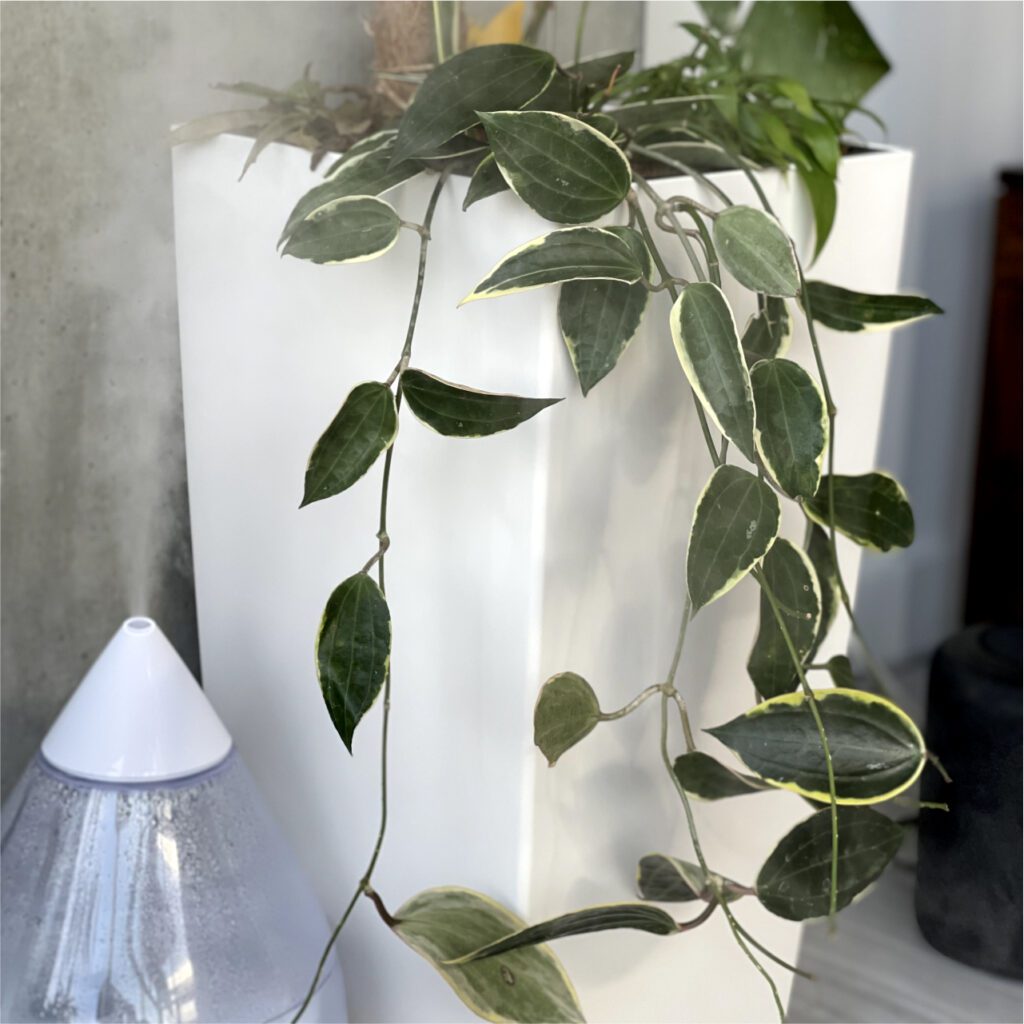Houseplants are a beautiful and natural way to improve the look and feel of your home. Not only do they add visual interest, but they also help to purify the air and boost your mood. However, many people struggle to keep their houseplants alive, due to low indoor humidity.
If you’re like most people who lead busy and active lifestyles, you probably don’t think about humidity levels until they become a problem. Or you may not have had the chance to come across a fabulous lifesaver article like this one that provides information on maintaining adequate humidity levels for your houseplants. And by then, it’s often too late for these humidity-loving plants!
Humidity levels in our homes can drastically fluctuate throughout the year or with the seasons. Our space’s humidity can dip to uncomfortable levels not only in winter due to an air-drying effect from a heater, but also in the hot summer months when the environment is artificially cooled by the air conditioner. Dry air or low humidity can not only cause plants to wilt and die, but it can also aggravate respiratory problems in humans.
I find a humidity level of 50-55% to be ideal for my plant bambinos as well as me and my family. This level of humidity in the household environment will help keep your plants from unnecessary dehydration as well as hydrate your skin and sinuses.
This blog post will discuss 5 easy ways to combat dry air and improve humidity levels for your house plants. Keep reading to learn more!
Top five ways to improve humidity for your house plants
The shortlist:
1. Place your plants on a pebble tray:
Fill a tray with pebbles and water, and place your plants on top. As the water evaporates, it will raise the humidity around the plants.
2. Group your plants together:
Grouping your indoor plants together helps to increase humidity while creating a microclimate.
3. Use a humidifier:
A humidifier can be used to add moisture to the air, making it ideal for dry winter months.
4. Mist your plants:
Misting your indoor plants with water helps to increase the humidity around them. Just be sure not to mist them too often, as this can encourage fungal growth.
5. Use a water fountain:
A water fountain is not only a great way to improve your Zen and the look of your space. It’s also a great way to raise the humidity in your home.
How much humidity? What is the best humidity for plants?
Not all plants like to be watered often, or sit in soggy soil, see my article below on potting soil. In fact, there is a large group of tropical plants that prefer more humidity in the air than they do in their pot, which can lead to root rot.
GET THE DIRT ON POTTING SOIL: WHAT YOU NEED TO KNOW FOR HEALTHY INDOOR PLANTS!
Plants like snake plants prefer very warm humid air to cold air or dry stale air. When given the proper environment they can go can long periods without being watered.
Note before a major increase in humidity, it’s best to research and know the proper amount of humidity levels for plants. For example, a rubber plant will have very different humidity requirements than African violets. So be sure to plan accordingly when buying new plants.
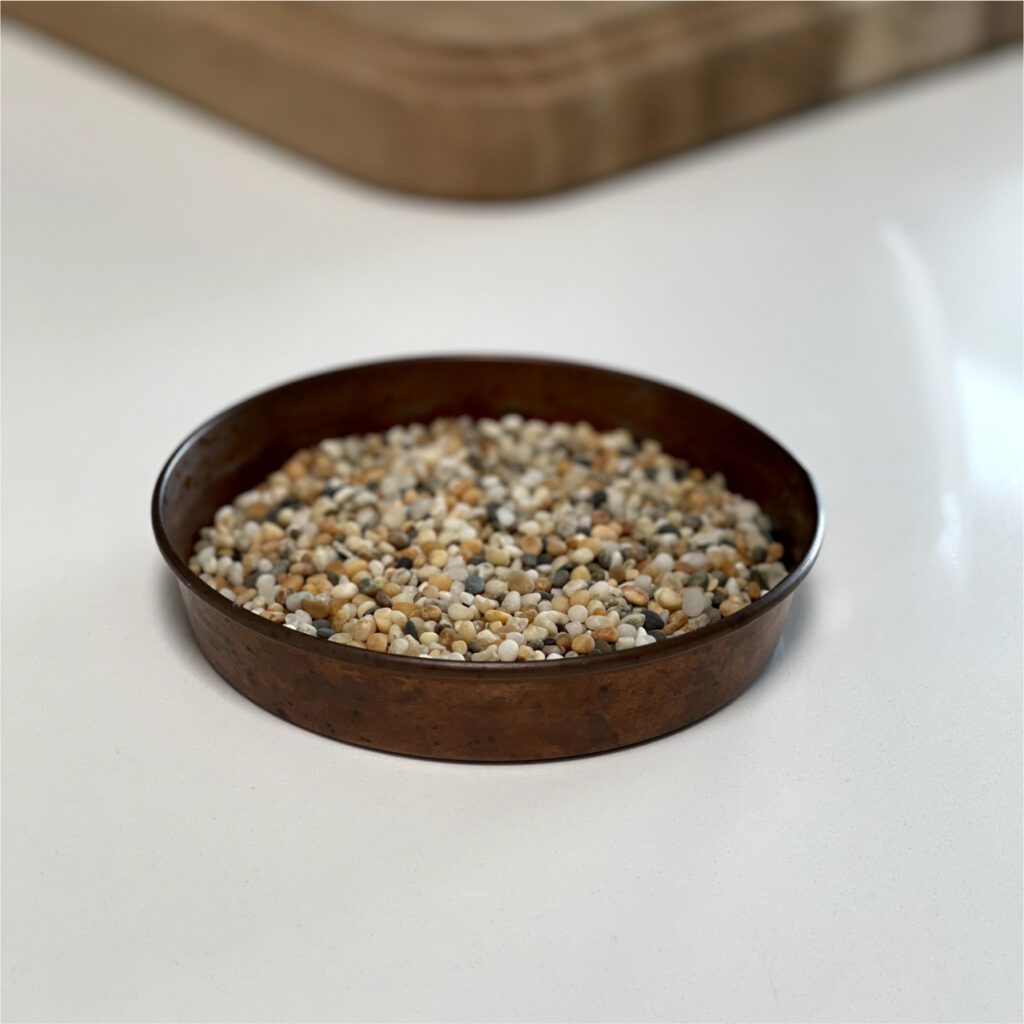

1. Place your indoor plants on a pebble tray:
Are you looking to add some extra humidity to your home without breaking the bank? Look no further than this simple solution, a few inexpensive humidity trays filled with pebbles and water. This basic, low-cost option can make a big difference in the humidity for your plants and your space.
The pebbles help to increase the surface area of the water, which in turn increases evaporation and humidity levels. As the water evaporates, it adds moisture to the air surrounding the plant, raising the overall humidity levels. And because the water is constantly evaporating, you don’t have to worry about mold or mildew growth. Remember it’s best to use filtered, distilled, or reverse osmosis water in your trays. Also, you do not want the pot sitting in the water in the pebble tray, which can lead to root rot.
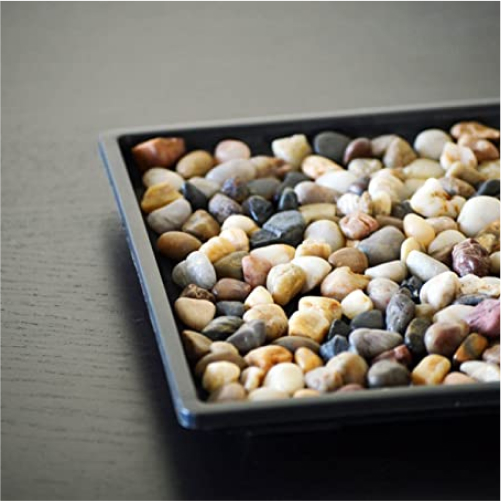

You can also experiment with different tray sizes and water levels to find the perfect balance for your space. These pebble trays can act as an aromatic diffuser as well, add a few drops of essential oils to the water for a refreshing scent. So next time you’re looking for a way to boost the humidity in your home, reach for a few pebbles and a decorative humidity tray!
Group your indoor plants together:
When it comes to plants, the more the merrier! There are a lot of benefits to grouping them together. The number one reason is that it will help increase the humidity around other plants. Plants transpire or release water vapor into the air through their leaves. And when they are grouped together, this vapor can help create a microclimate that is more humid for the group. This is especially beneficial for tropical plants that prefer high humidity levels. Tropical plants will start showing brown leaf tips when they are suffering from low humidity.
By grouping your plants together you can also protect them from drafts thanks to a barrier of foliage, which in turn can help minimize damage to the more delicate plants.
Lastly, grouping plants together can also create a more aesthetically pleasing display. By combining different colors and textures, you can create a beautiful and eye-catching collection of tropical plants. So next time you are planning your indoor garden, be sure to group your plants together to increase humidity!
Use a humidifier:
Most plants thrive in environments with fairly high to moderate levels of humidity. This will help keep the leaves and stems hydrated and prevents the soil from drying out too quickly. However, during the winter months, when heating systems are running constantly, or when the air conditioning is constantly on in homes and offices, the air can become quite dry. This can cause problems for plants, as well as for people who suffer from conditions like sinusitis or asthma.
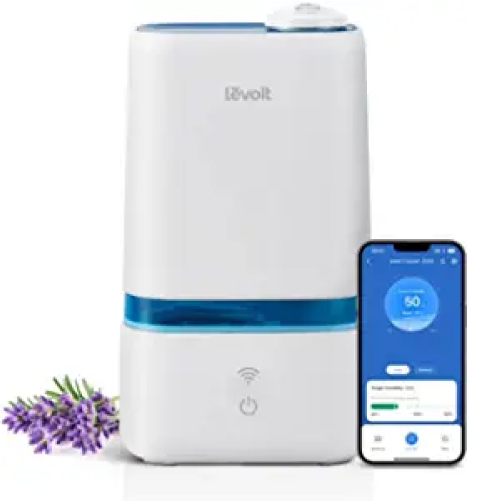

A humidifier can help to improve the air quality in your home or office, and it can also be beneficial for your plants. By adding moisture to the air, a humidifier can help to reduce the amount of water that your plants lose through transpiration. In turn, this can help to keep your plants healthy and prevent them from becoming stressed. Additionally, a humidifier can also help to ward off pests like spider mites, which are attracted to dry environments. So, if you’re looking for a way to improve the air quality in your home and give your plants a boost, consider using a humidifier.
Most homes’ humidity percentage can easily drop below the 30% range with heating and air conditioning when a humidifier is absent.
It’s possible that if you have ever had a plant that just wouldn’t seem to thrive, it might have been due to the lack of humidity in your home. Many people don’t realize that the air inside our homes is much drier than the air outside, and this can be detrimental to our plants. However, by using a humidifier, you can create a more hospitable environment for your plants and help them to thrive.
There are several benefits to using a humidifier for your plants. An increase in humidity can help to prevent leaves from drying out and turning brown. It can also help to reduce the risk of fungal diseases, which often flourish in dry conditions. In addition, increased humidity can make your plants more resilient to stress and pests. As a result, using a humidifier is a great way to give your plants a little extra TLC.
Not all humidifiers are created equally
If you are thinking of adding a humidifier to your home, there are a few things to keep in mind. First, make sure that you choose a humidifier that is appropriate for the size of your space. Second, be sure to clean your humidifier regularly to prevent the growth of mold and bacteria. Finally, remember that too much humidity can be just as harmful as too little. Consider a humidifier that has an app or digital control to keep humidity levels in a healthy range of 50-55%.
Mist plants:
Misting your plants is an excellent way to personally connect with them and increase the humidity in your space. With a simple inexpensive spray bottle and a little time, you can raise moisture levels around your plants. The water droplets help to raise the humidity level in the air around the plant. This increase in humidity levels can be beneficial for a wide variety of plants. Misting also helps to cool the leaves of the plant, and this can be especially helpful during hot summer days.
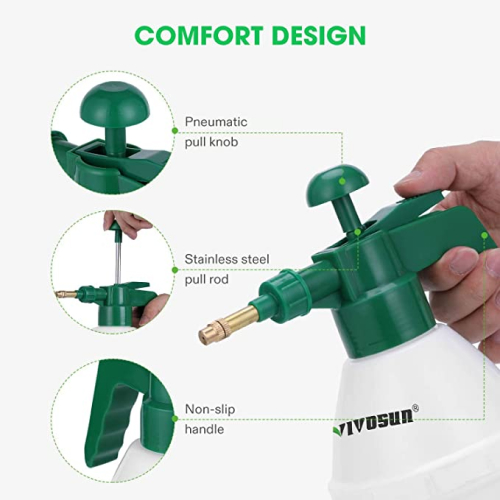

In addition, misting can help to wash away dust and dirt from the leaves of the plant, which can improve the plant’s ability to photosynthesize. So its a win-win! Finally, misting can also help to prevent insect pests from setting up shop on your plants. Avoid tap water to prevent water spots from forming. Instead, use distilled water or reverse osmosis. So if you’re looking for a way to connect with your plants, consider misting!
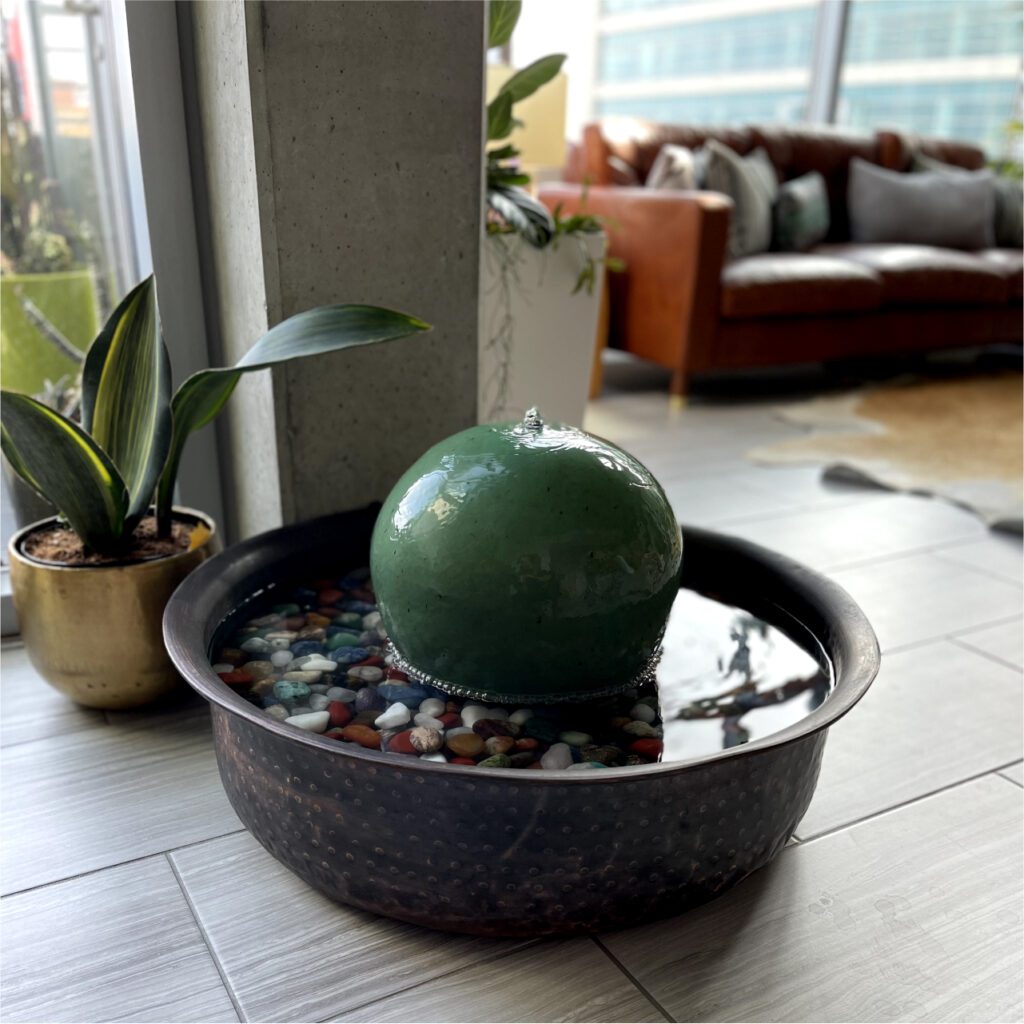

Use a water fountain:
While I love and use all of the above-mentioned methods in our home, this one has a special place in my heart! I love fountains and always find a way to incorporate one somewhere in the design of my space. I find the sight, sound, and feel of flowing water to be soothing and comforting in a natural way.
Water fountains come in all shapes and sizes, from simple tabletop models to grandiose wall-mounted sculptures. And while they may be primarily used for decoration, water fountains can also be a great way to improve the humidity of your space. The fine mist or evaporation created by the flowing water of your fountain will help significantly raise the humidity levels in your space.
Lastly, I find a fountain to be one of the most attractive options for creating a microclimate that is perfect for plants to thrive. In addition, the sound of the water can help to mask other noise pollution in your space. So if you are looking for a way to add a touch of beauty to your home while also giving your plants a moisture boost, consider investing in a decorative water fountain.
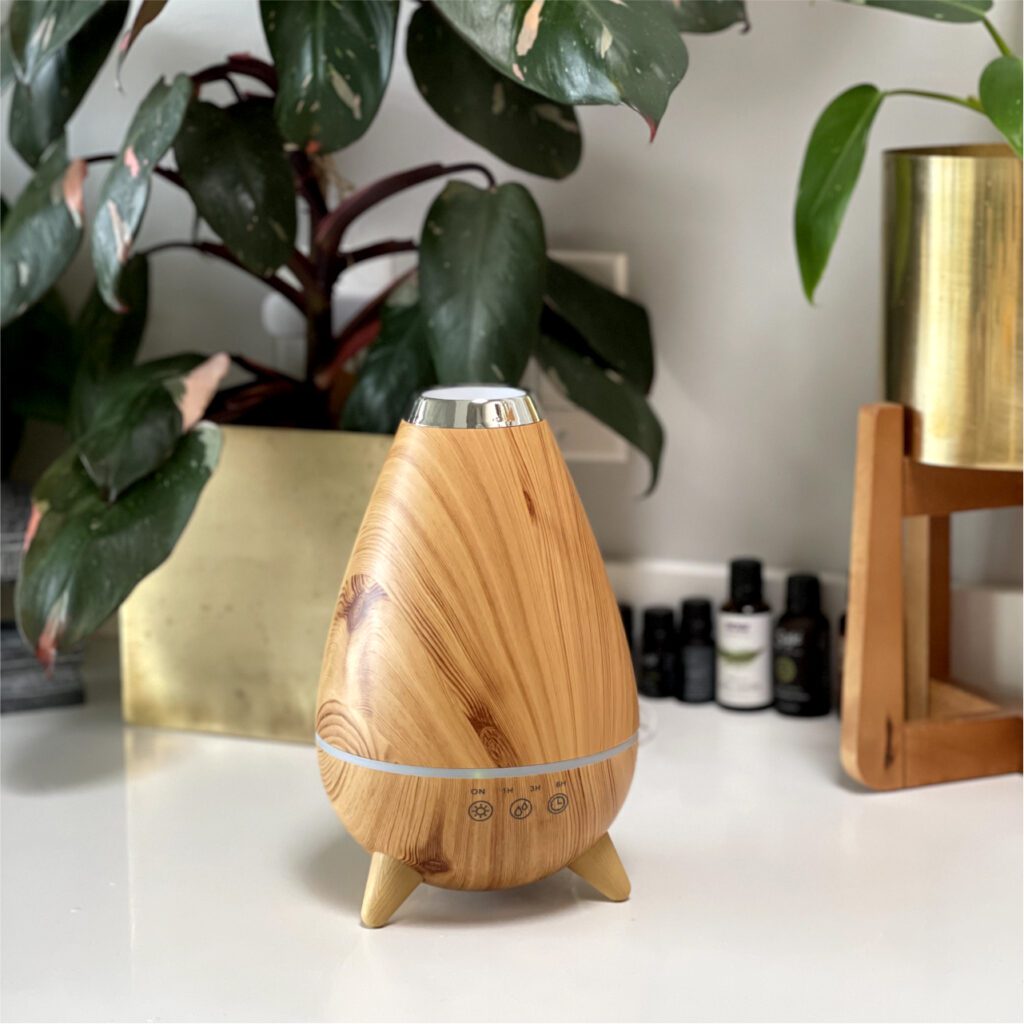

I hope you have enjoyed learning about humidity and the benefits it will have on you and your plants!
Remember to know how much humidity your plants require and find the best option to fit your space and budget as well as their needs.
